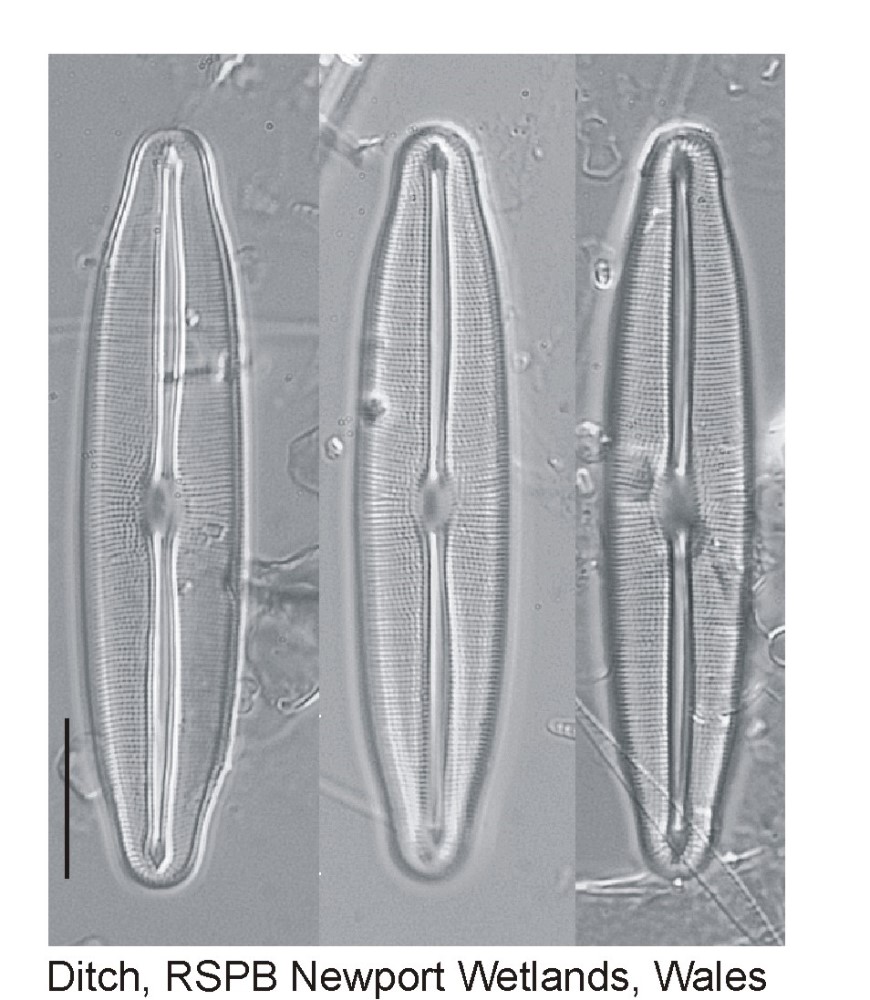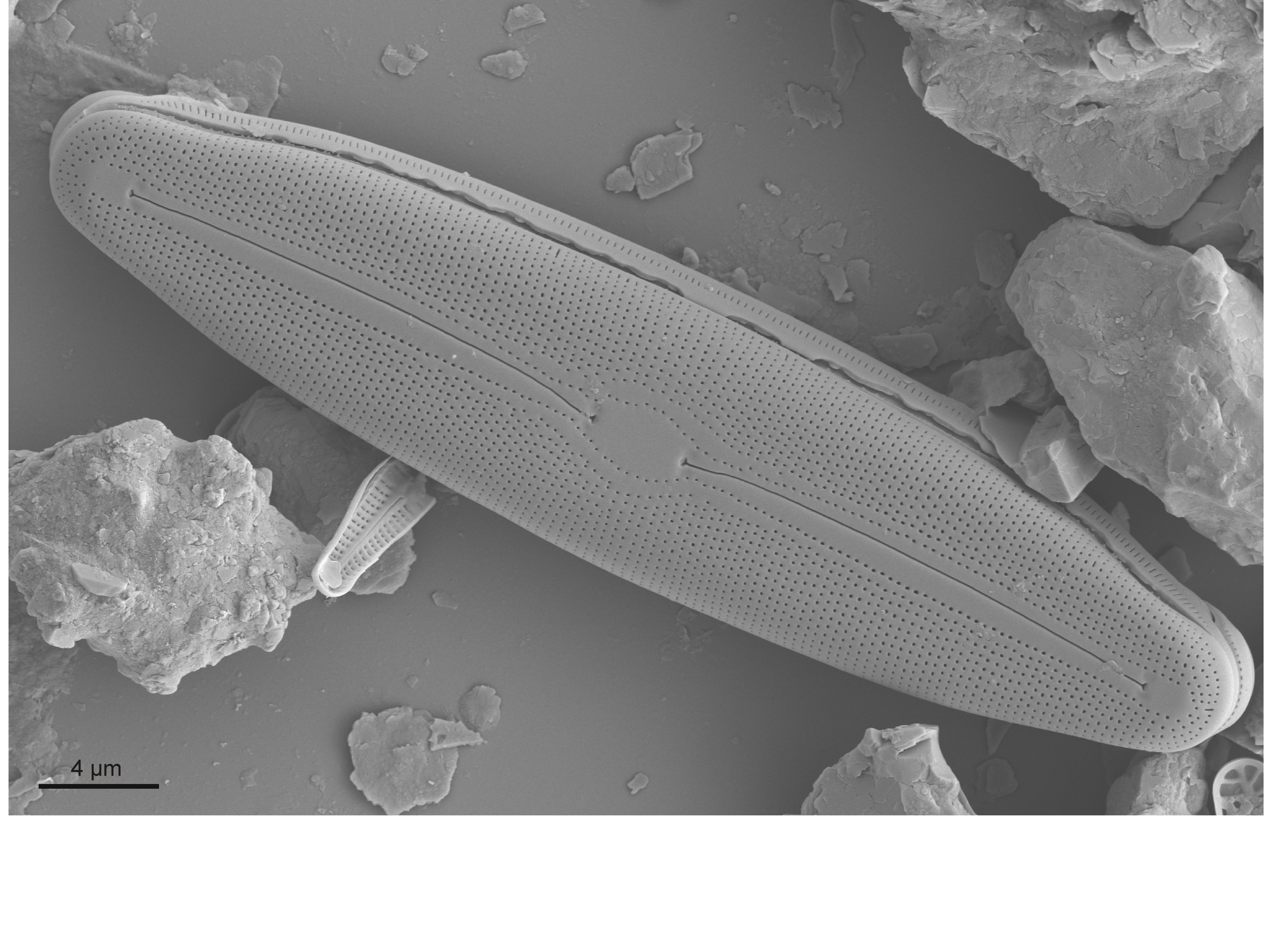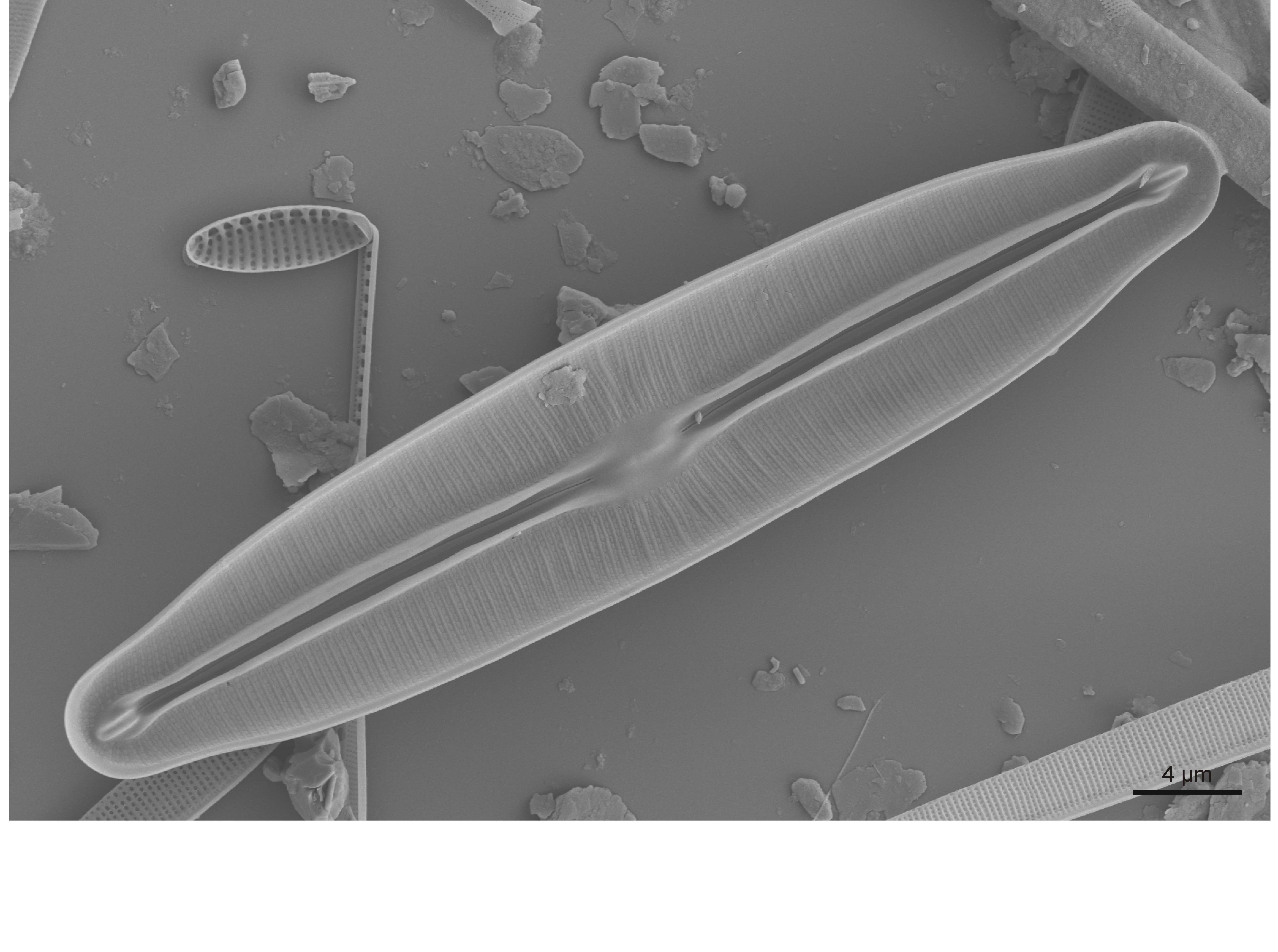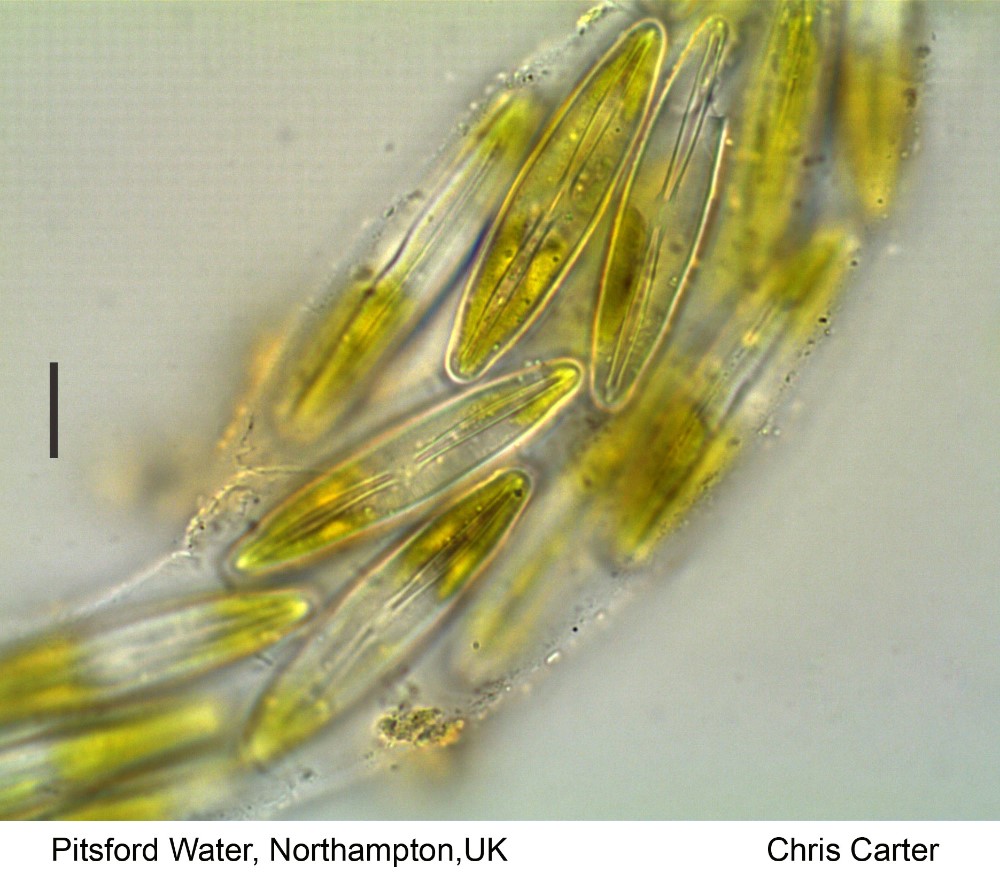Frustulia vulgaris (Thwaites) De Toni; 1891; 280
Key references
Lange-Bertalot H. 2001. Navicula sensu stricto, 10 genera seperated from Navicula sensu lato, Frustulia. 2. Lange-Bertalot H. (ed.), Diatoms of Europe, Diatoms of the European Inland waters and comparable habitats. A.R.G. Gantner Verlag K.G., Ruggell. 526 pp
Morphology
Shape
Valves linear-elliptic, rarely linear-lanceolate with broadly rounded subrostrate ends.
Symmetry
Isopolar, bilaterally symmetrical.
Striae
Punctate, radiate at the valve centre, becoming slightly radiate or almost parallel, finally convergent and circumradiating the valve ends.
Axial area
Narrow, linear, not continuing to the valve apices but terminating near the valve/mantle margin some distance from the distal raphe ends.
Central area
Elongate or oval, sometimes slightly asymmentrical.
Raphe
Slightly curved with y-shaped proximal and distal ends. Internally with longitudinal ribs on both sides of the raphe which fuse with the helictoglossae. The porte-crayon appears small.
SEM morphology
Internally the longitudinal ribs are interrupted at the valve centre.
The longitudinal ribs are not clearly fused with the longitudinal helictoglossa.
Internal areola openings occluded, virgae are slightly thickened particularly in the valve centre.
Valves linear-elliptic, rarely linear-lanceolate with broadly rounded subrostrate ends.
Symmetry
Isopolar, bilaterally symmetrical.
Striae
Punctate, radiate at the valve centre, becoming slightly radiate or almost parallel, finally convergent and circumradiating the valve ends.
Axial area
Narrow, linear, not continuing to the valve apices but terminating near the valve/mantle margin some distance from the distal raphe ends.
Central area
Elongate or oval, sometimes slightly asymmentrical.
Raphe
Slightly curved with y-shaped proximal and distal ends. Internally with longitudinal ribs on both sides of the raphe which fuse with the helictoglossae. The porte-crayon appears small.
SEM morphology
Internally the longitudinal ribs are interrupted at the valve centre.
The longitudinal ribs are not clearly fused with the longitudinal helictoglossa.
Internal areola openings occluded, virgae are slightly thickened particularly in the valve centre.
Literature
References are given in chronological order.
Reference |
Citation |
|---|---|
| Thwaites G.H.K. 1848. Further observations on the Diatomaceae with descriptions of new genera and species. Annals and Magazine of Natural History. series 2 1: 161-172; pls 11, 12. | Illustrations |
| Krammer K., Lange-Bertalot H. 1986. Süßwasserflora Mitteleuropas. Bacillariophyceae. 1. Teil. Naviculaceae. Eds Ettl H., Gerloff J., Heynig H., Mollenhauer D., Gustav Fischer Verlag, Stuttgart. 876 pp | Morphology; Ecology; Illustrations |
| Lange-Bertalot H. 2001. Navicula sensu stricto, 10 genera seperated from Navicula sensu lato, Frustulia. 2. Lange-Bertalot H. (ed.), Diatoms of Europe, Diatoms of the European Inland waters and comparable habitats. A.R.G. Gantner Verlag K.G., Ruggell. 526 pp | Morphology; Ecology; Illustrations |
| Kulikovskiy M.S., Lange-Bertalot H., Witkowski A., Dorofeyuk N.I., Genkal S.I. 2010. Diatom assemblages from Sphagnum bogs of the world. I. Nur bog in northern Mongolia. 55. Bibliotheca Diatomologica. 326 pp | Illustrations |
This page should be cited as:
Jüttner I. Frustulia vulgaris (Thwaites) De Toni; 1891; 280. In: Jüttner I., Carter C., Cox E.J., Ector L., Jones V., Kelly M.G., Kennedy B., Mann D.G., Turner J. A., Van de Vijver B., Wetzel C.E., Williams D.M..
Freshwater Diatom Flora of Britain and Ireland. Amgueddfa Cymru - National Museum Wales. Available online at https://naturalhistory.museumwales.ac.uk/diatoms/browsespecies.php?-recid=2832. [Accessed:
].
Record last modified: 27/12/2020






